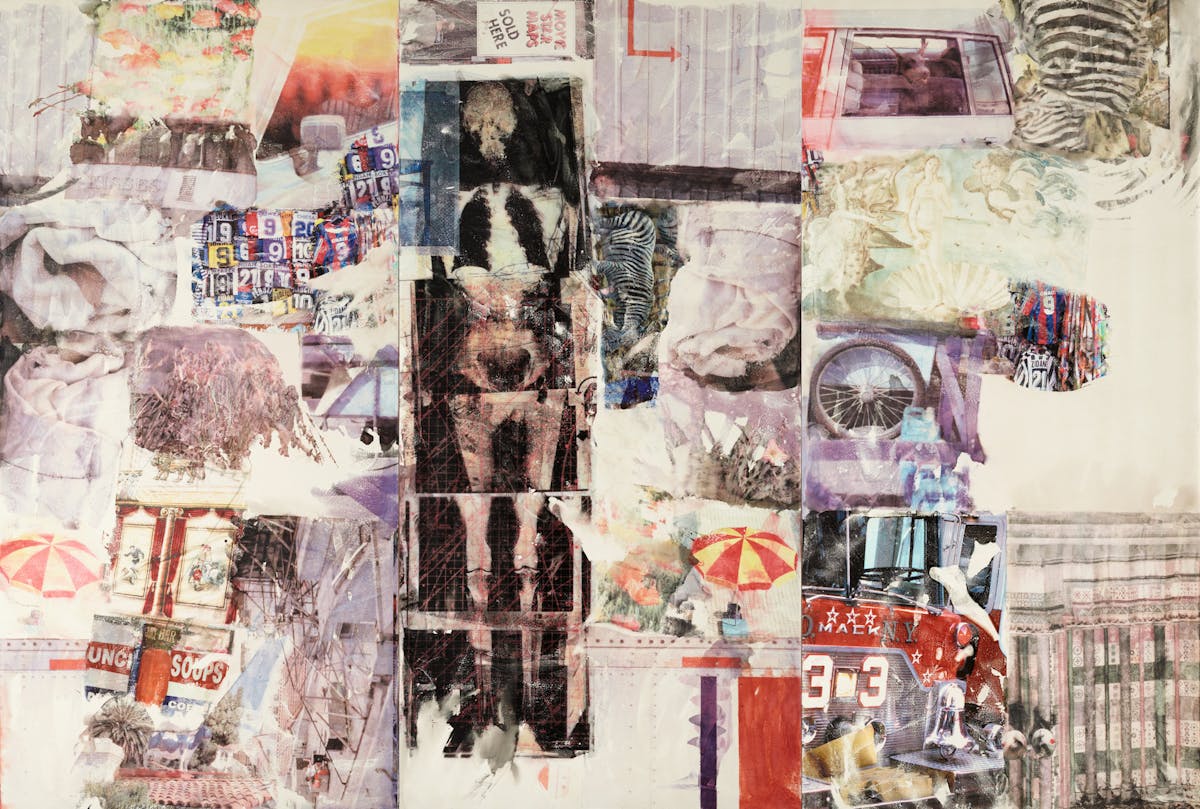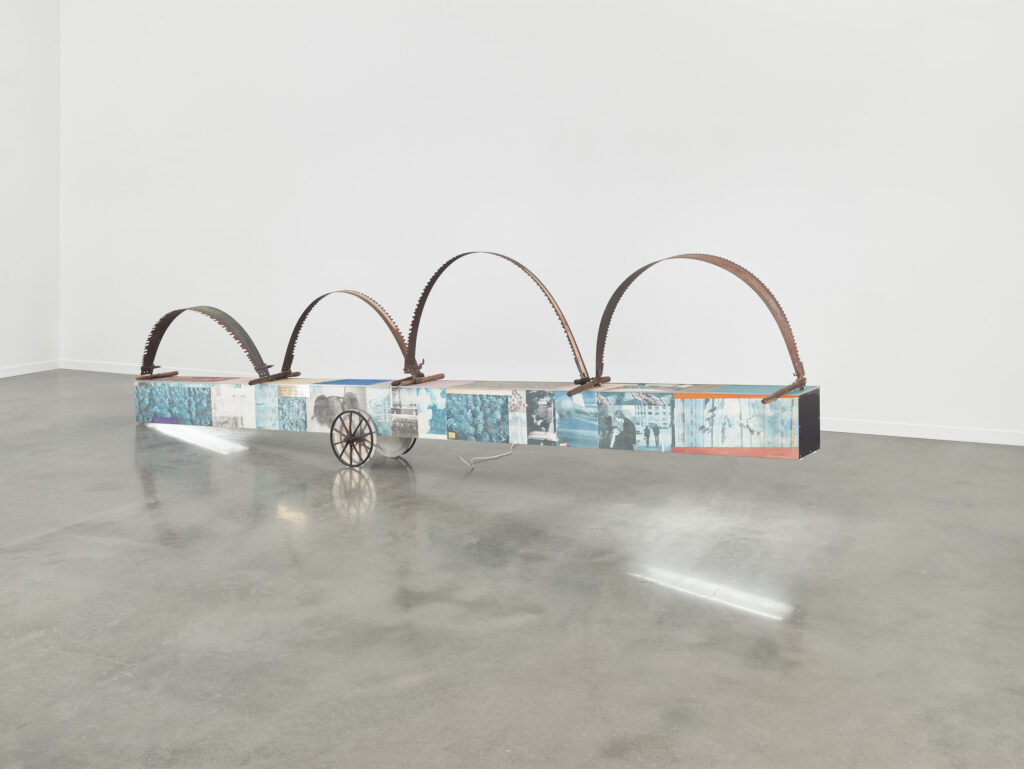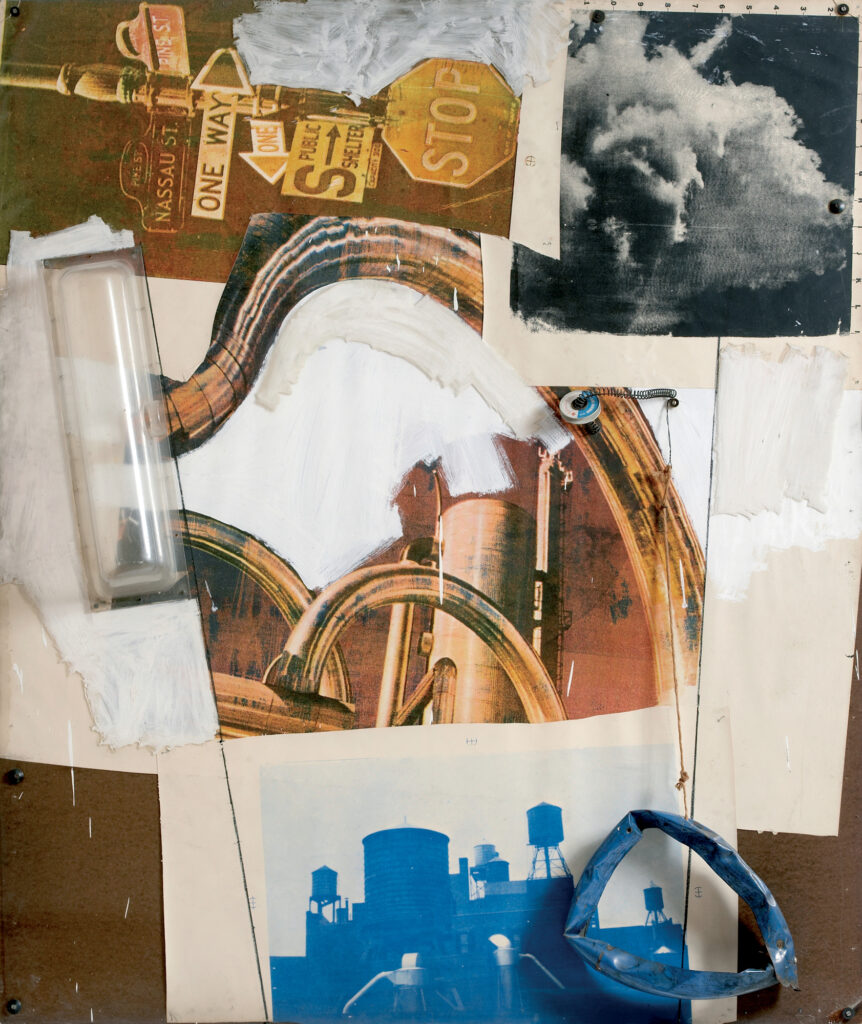A Modern Master Visits Brooklyn
‘Robert Rauschenberg: A Subjective View’ provides an on-one-foot introduction to an artist whose strange and charismatic work can feel as if it arrived on a spaceship from another planet.

In a corner of a gallery called Faurschou New York, itself nestled in a corner of Greenpoint, Brooklyn, “Robert Rauschenberg: A Subjective View” provides an on-one-foot introduction to an artist whose strange and charismatic work can feel as if it arrived on a spaceship from another planet where art refuses to stay flat on the canvas, but reaches out and drills down to issue invitations and stage invasions. Touch it the wrong way, and bleed.
The six works on display all belong to the Faurschou Foundation, a Copenhagen-based concern with locations at Beijing and Venice in addition to New York. The Brooklyn space encompasses 12,000 square feet of exhibition area in what was once an industrial warehouse. The foundation’s driving force is Jens Faurschou, a onetime art dealer turned contemporary art mogul. The show lasts until the end of January.
Rauschenberg was born in 1925 in a Texas oil town and came of age as an artist at Black Mountain College, a hothouse of artistic innovation presided over by the German refugee Josef Albers that drew such iconoclasts as the composer John Cage, the choreographer Merce Cunningham, the poets Charles Olson and Robert Creeley, the architect Robert Buckminster Fuller, and the artists Cy Twombly, Willem de Kooning, and Rauschenberg.
Installed at Lower Manhattan by the early 1950s, Rauschenberg adroitly melded printmaking, drawing, photography, painting, and sculpture, as well as scraps of wood, metal, and other detritus. Like an earlier artist, Marcel Duchamp, Rauschenberg was intrigued by the close at hand, the ready-made. He was irreverent, asking de Kooning for a painting he could then erase. De Kooning complied, and “Erased de Kooning Drawing” resulted.
If the abstract expressionists ran hot — think of Jackson Pollock dancing his paint onto the canvas — Rauschenberg ran puckish. His work remixes Duchamp’s zany Dadaism and anticipates Andy Warhol’s pop creations. With the painter Jasper Johns, with whom he shared a bed and an aesthetic sensibility, Rauschenberg catapulted to the front ranks of American art, nabbing the International Grand Prize in Painting at the 1964 Venice Biennale.
Johns, who also learned from Duchamp the trick of using what exists rather than painting from scratch, announced his commitment to the “things the mind already knows,” like flags, targets, and numbers. Johns believed that “a picture ought to be looked at the same way you look at a radiator,” and the works on display at Faurschou are art spun from detritus, crafted from the rough and ready. They are dual citizens of the gallery and garage.
If there is a word usually associated with Rauschenberg, it is “combine,” a term of his own coining. His combines are centaurs, joining painting and sculpture in forms that are both striking and elusive, jumping between two and three dimensions. He leaned on newspaper and magazine clippings, attracted to layers and collage. He was a genius of the jumble and the haphazard stimulants of modern life. One, “Canyon,” features a stuffed eagle.
At the center of “Subjective View” is “The Lurid Attack of the Monsters from the Postal News Aug. 1875 (Kabal American Zephyr).” It slashes across the middle of the exhibition space, a long box on wheels festooned with tightly coiled saws. The box is covered with photographs depicting gas mask-clad masses, John Lennon playing the piano, and images from the natural world. It feels both vehicular and biomorphic, a centipede and a weapon.

“Mirthday Man [Anagram (A Pun)],” from 1997, is a full-length X-ray of Rauschenberg’s body, a kind of infrared riff of a classic portrait that bypasses surface for interior. It is intrusively personal, but also entirely anonymous; we would likely not be able to pick our own X-ray, or fingerprints, out of a lineup, even as they are signatures of our unique selves. This birthday present to himself is festooned with photographs, a kind of magnified scrapbook.
“Heroes Sheroes,” from 1962, is a ghostly panoply of figures moving through a swirl of black and white, flickering out of view. Images lifted from other works appear as photo negatives, conjuring the sense of an artistic purgatory. They seem restless, wondering how they ended up trapped in Rauschenberg’s collage. “Cartoon,” on the other hand, is a riot of color studded with twisted metal that resembles an extracted organ.

“Gulch,” from 1965, features fragments of urban landscapes; images of street signs, water towers, and a passing cloud. Affixed to it are a plastic tube and a hanging piece of bright blue metal, suspended from a piece of twine knotted to a spring. The metal’s blue rhymes with a photograph of rooftops dyed the same color, which in turns winks to an azure roll of Johnson & Johnson tape dangling from the work. It’s inscrutable and fantastic.

